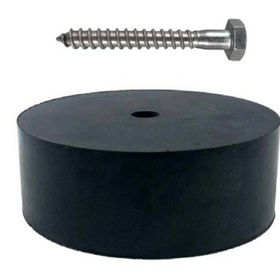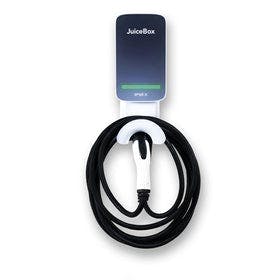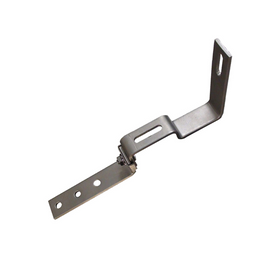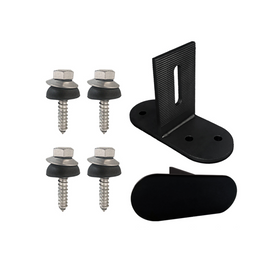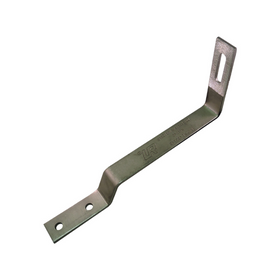
A Modern Farmhouse Emerges from a Deep Energy Retrofit
Last Updated: Feb 19, 2025When they were ready to purchase their first home, Sara and Gareth Ross decided with great care. “We wanted to be thoughtful,” Sara says. “How should our first home reflect who we are and our values?” Both grew up loving and spending time in nature, Gareth in South Africa and Sara on Cape Cod and the woods of Vermont. “We also were increasingly and urgently absorbing the reality of climate change, and realizing the nature we love is at risk.”
Moreover, Sara continues, “We were new parents and wanted to be mindful of what we model for our kids. We also wanted to make sure we optimized the costs and the performance of our first home in ways that reflect our values.”
Put all of that together, Sara says, “and it was obvious we weren’t going to build an energy hog of a house.” Little did she realize then, however, that their renovation of the 1880s house in Amherst, MA, would also change her life professionally.
Table of Contents
- Rethinking the Roof
- Deep Energy Retrofit
- Sharing Values with the Kids

The Rosses completed a "deep energy retrofit," as their architect Tom Hartman of C&H Architects in Amherst, calls their renovation, and in 2010 moved into their net-zero home. Inspired, Sara founded Sungage Financial in 2011. Her company helps homeowners finance their solar arrays.
"While exploring options for installing solar on our roof, I couldn't find an easy way to finance the purchase of a solar system," she says. "I set out to fill the void by providing a financing solution installers could use to help homeowners."
Founded in 2011, Sungage Financial provides a proprietary online platform that enables homeowners to apply, qualify, and contract for solar financing. Sungage partners with institutional investors and installers who design systems that fit homeowner sites and energy needs. The installer files for all permits. They order equipment, install the system, and organize inspections. The installer receives payment when the system is fully operational. It's a win-win for all involved.

Then the couple found a 120-year-old farmhouse in lousy shape. “It didn’t have any insulation in the walls or the attic,” Sara says. “Also, the house was heated with an oil furnace from the early 20th century and was clad in mint-green asbestos shingles, clapboard covered in lead paint, and brick veneer.” But the house had some positives: the framing was structurally sound, and the house had a south-facing orientation.
The Rosses thought about demoing the house. “Philosophically, we decided we’d found the perfect candidate for a deep energy retrofit,” Sara says. Renovating an existing structure would also fulfill their sustainability goals. "Sara and Gareth wanted a super-insulated house,” Hartman says. “Photovoltaics were becoming more affordable, so we looked into that. We did a cost analysis and decided to clean up the roof plane to maximize the solar panels and their solar gain.”
Adds Sara: “We didn’t originally intend to create a net-zero house. Instead, we worked with Tom to make decisions that would result in a super-efficient building envelope. That would maximize every square foot of the house, and that would create spaces that would accommodate the way we live.”
The Rosses also wanted to allocate their finances to these critical projects and leave their long-term wish list—including a garage and a screened-in porch—for later. “As a result, we love our highly energy-efficient, sustainable modern farmhouse,” Sara says. “We didn’t change the original footprint, but we upgraded the home’s functionality and energy efficiency through smart and sustainable design.”
For example, Hartman removed a roof gable interrupting the south orientation and redesigned the roof to create rafter bays for insulation. The space also enabled him to insert a third-floor guest suite and office and maximize the roof area for PVs. “By clustering the auxiliary spaces (the office and guest suite) on the third floor,” Sara adds, “and through our multi-zone heat pump system, we can ‘power down’ those areas when they’re not in use.”

Deep Energy Retrofit
To super insulate the 3,200-square-foot home, the construction team filled the interior cavities with open-cell foam. They wrapped the exterior with foil-faced foam. The house also has an efficient roof assembly, triple-glazed windows, and a low window-wall ratio. As a result, the air-tight envelope provides whole-assembly R-values of 20 for the basement walls, 34 for the exterior walls, and 57 for the roof.
When Federal and state economic incentives for solar became available, the Rosses decided to add solar power looked was a smart choice—financially and environmentally. Their south-facing rooftop solar panels produce 12.4 kW, enough to fulfill all of their electricity needs in the all-electric house. “Despite running only electric appliances,” Sara says, “we generate 30% more energy than we consume.” The result is a net-zero home.
The Rosses choose a Variable Refrigerant Flow (VRF) zoning system from Mitsubishi for heating and cooling during warm summers and cold winters. Because the home is super-insulated, the family only needed one compact exterior heat pump condenser. Moreover, since the VRF system delivers refrigerant directly to various interior fan units, Hartman and his team could conserve space without scarifying comfort or access. The system also provides continuous filtered air and humidity control.
“We had a terrible ice storm a couple of years ago,” Sara says. “The neighborhood was out of power for several days, but our house never got too cold. It brings in enough solar gain and is so insulated that we stayed warm and comfortable.”

Sharing Values with the Kids
"I love that our kids understand and have a daily physical reminder of the choices we've made," Sara says. "You can't see the insulation, and you may not notice the three panes of glass in the windows. But you see the solar panels on the roof. They're visible and indicate something different is going on at our house. To our kids, they're an ever-present reminder of our family's values."

After living in drafty homes and apartments all their lives, Sara and Gareth are also pleasantly surprised at the comfort a super-insulated house provides. “The lack of noise and hot and cold spots, the superior air—the comfort of our home is such a glorious thing,” Sara adds. She’s also partial to the advantages of solar power, which has made her house net-zero in combination with the insulation.
“Solar has become my life’s work,” she says. “The sun is a resource that powers everything from my electric car to my hairdryer. The solar is visible on our house and starts conversations. From a safety and fossil fuels point of view, living in a solar-powered all-electric house is pretty magical.”
Camille LeFevre
Camille LeFevre is an architecture and design writer based in the Twin Cities.




